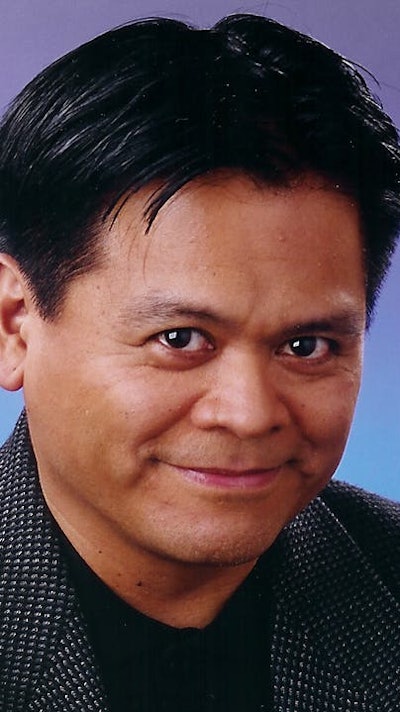Everyone knows that success in life takes a lot of skill and talent. But it’s not just merit. It’s also luck and that may be the answer as everyone in higher ed awaits the anticipated Supreme Court ruling on the lawsuit challenging Harvard admissions.
In the meantime, let us honor not just the graduates of the season, but to the matriculates—those committing to Fall’s Class of 2027. At Harvard, it’s a record for Asian American matriculates.  Emil Guillermo
Emil Guillermo
I love the word matriculate. It sounds like it should do more than it does. But it’s just the easy part after you get admitted—saying if you’re really going to go. Yes or No. Getting admitted is the hard part.
This year, 56,937 people applied to Harvard and only 1,942 got in. That’s a 3.41 percent acceptance rate. On Friday, Harvard announced 84 percent of those offered admissions said they would matriculate, or actually enroll this fall, about 1630 students. And about 486 of them are Asian American. That’s a freshman class that’s 29.8 percent Asian, two percent higher than the record set last year.
It makes for an odd coincidence. Just as the Supreme Court is set to deliver an opinion by this summer in a lawsuit that claims Harvard’s process discriminates against Asian Americans, the school has produced a class that is more Asian, and more diverse in terms of race and class in its history.
The Black student population is down slightly but is still at 14.1 percent of the new class. Latinx students are down from 11.9 percent to 11.1 percent. Native Americans and Native Hawaiians were at 3.6 percent and are now at 2.3 percent.
White students are up from 42.5 percent to 42.7 percent. That’s still too close to 50 percent for my taste.
It doesn’t exactly look like America, with Asians at 29.8 percent of the class, more than four times the Asian population in the U.S. But the school has a racial diversity that wasn’t present when I was a student there in the 1970s.
More surprising is the class economic diversity, with Harvard raising the threshold for its zero-cost program. Previously, it was meant for families making $75,000 a year; now, families making less than $85,000 can qualify. Nearly 24 percent of this incoming class are from families that qualify.
Make no mistake. Harvard’s no public school. But the school now has a much better mix of class and race than ever before. The fourth generation legacy still gets in. And so do the wealthy.
That’s the affirmative action that needs to be excised.
But the case before the Supreme Court doesn’t really address that aspect.
SO WHAT EXACTLY IS THE SUPREME COURT’S RULING TRYING TO FIX, AND MY SOLUTION TO ALL OF THIS
Most observers feel that the court’s 6-3 conservative majority will side with the earnest but duped Asian Americans who claim discrimination. The ruling could ban affirmative action and force every college, not just Harvard, into some form of “race-blind admissions.” But how would a race-blind policy improve what Harvard was able to accomplish on its own using race as just one factor among many?
The anti-affirmative action group, Students for Fair Admissions, which claims that Harvard discriminated against Asian Americans, might welcome the race-blind approach, but what if such a change ends up with a school that’s nearly 40 percent Asian, like some University of California campuses? Of course, the Asian number could go down too.
And what of the representation of other groups? What if Black and Latinx admissions decrease even further? And what if white admissions go back over 50 percent?
That appears to be the Republican Party’s goal in a universe where “diversity” is now considered a dirty word by anti-woke Republicans.
SCOTUS could always affirm the lower court’s ruling that sided with Harvard. But the Supremes seem ready to undo real progress, and that would be a shame.
Maybe they should consider “totally blind” admissions, what I would consider an enlightened lottery. That would end affirmative action for the W&W (the white and wealthy). And it would acknowledge that in life, there’s more to success than merit.
There’s the matter of pure luck.
I have previously been negative toward any kind of lottery-based admissions. But it may be the only way to make things fair.
When dealing with the limited resources doled out in admission to a place like Harvard, how else do you make things “fair”?
Talent wins out most times in life, as in Iam Tongi in this past Sunday’s “American Idol.” He was a skilled and talented singer.
But you also need a lot of luck to win.
Let’s see how lucky you getting into the college of your choice.
As a AAPI myself, I know how much most AAPI love to gamble. With more than 60 percent of the population foreign born, they know just coming to America was a gamble.
So congratulations to all the lucky 486 Asian Americans planning to enroll in the fall. But if you’re not matriculating, perhaps because you were rejected, I hope you’re not planning to sue. Remember, you were not discriminated against by the school that declined your admission. Think of it this way. Of the 1,942 who were originally admitted, 312 people among them actually said NO to Harvard.
Or maybe Harvard was their backup, and they said no to their first choice. Harvard is not planning to sue them for discriminating against it. But if you got rejected, you may want to see where those 312 naysayers are going and join the “Just say No to Harvard” club.
You’re a natural. You know “No.”
Just don’t sue.
One time-wasting lawsuit forged by conservative zealots—and fronted by Asian Americans–is one too many.
Emil Guillermo is a journalist and commentator. A former adjunct professor, he writes for the Asian American Legal Defense and Education Fund (www.aaldef.org).
















